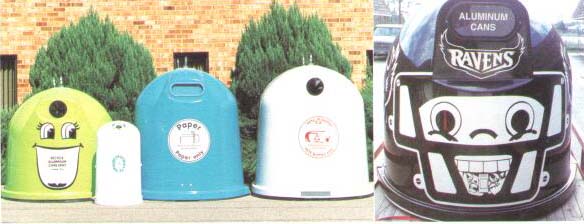
For the first time in decades, the community improvement group Keep America Beautiful and the Ad Council are teaming up on a national recycling awareness campaign, this time with the goal of turning more Americans into “avid recyclers.”
The two organizations helped thrust recycling into the public eye in 1971, when they created the now-iconic Iron Eyes Cody television spot, and in the years that followed, Keep America Beautiful has crafted a number of other litter and recycling awareness campaigns. The current effort, called “I Want to Be Recycled,” uses a multifaceted website and handful of strategies and advertising formats to demystify the recycling process for consumers, most notably by tracing how specific products can be transformed into other items.
Two television spots were released recently – a 60-second ad that follows the journey of an HDPE milk jug that becomes recycled into a park bench made from recycled plastics and a 15-second ad that shows an aluminum can becoming part of the Baltimore Ravens’ stadium. Those TV commercials will be supported by radio spots, out-of-home advertisements and an extensive digital campaign. All of the ads direct audiences to the new website iwanttoberecycled.org.
In a press release announcing the campaign, the groups noted that recent data from the U.S. Environmental Protection Agency indicate only 52% of Americans feel they are “very or extremely knowledgeable” about how to properly recycle and that only 38% say they are “avid” recyclers — that is, that they recycle as much as possible.
“I know that we can reach the ‘occasional’ recycler and transform recycling into a simple, daily habit for millions of Americans,” said Peggy Conlon, president and CEO of the Ad Council, a nonprofit group that brings on advertising industry experts to create public service announcements. The two groups hadn’t partnered to do a campaign since the iconic “Crying Indian” spot from more than 40 years ago.
The idea of the current campaign — to trace the journey of recovered materials — came from several years of consumer research. “Those we surveyed were interested in creating less waste and some of the other environmental benefits of recycling,” Brenda Pulley, Keep America Beautiful senior vice president, recycling told Resource Recycling. “But one of the more interesting takeaways was how many of the respondents were intrigued and fascinated that recovered materials could become something else.”
"The core idea is to tell people to recycle and give their garbage another life. Showing that a bottle has dreams seems like a very powerful yet delicate way of doing it,” said PJ Pereira, chief creative officer at Pereira & O’Dell, the San Francisco-based ad agency that designed the campaign pro bono.
“This campaign is the emotional push needed to raise awareness and positively change people’s behavior to recycle more,” said Pulley. “Based on survey feedback, we know people want to recycle. This campaign is designed to tap into that desire as well as provide helpful tools to make recycling easier. I know of no other national campaign of this scale just on recycling.”
Resource Recycling
Recycling Back in the Spotlight With National Ad
Joseph Coupal - Thursday, July 18, 2013






































